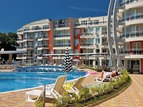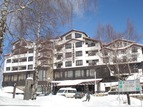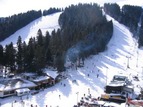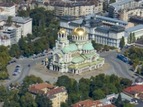Historical pros and cons
Sofia Echo Com, 12.03.2005
EVIDENCE that the Government is keen to make Bulgaria’s cultural and historical heritage a focus of tourism was unveiled on March 3. Prime Minister Simeon Saxe-Coburg performed a ground-breaking ceremony for a project near Kazanluk related to the so-called Thracian “Valley of the Kings”. The ceremony took place at the tomb, found last autumn of Seuthes III, who ruled in the 4th century BCE. Saxe-Coburg called the Thracian tombs “more than unique and incredible”, comparing them to the ancient finds in Greece. “We should develop this sector very carefully and try really hard because competition in cultural tourism is rather stiff,” Saxe-Coburg said. A total of 3.2 million leva has been allocated for the project, of which 1.2 million leva are a subsidy from the executive budget for 2005, and the remainder comes from the Ministry of Regional Development and Public Works. The money will be used to build roads and other infrastructure needed for the easier access of tourists to the sites. Kazanluk mayor Stefan Damyanov said the money would be spent on key communications and transport in the area, restoration and conservation of the archaeological finds, and an information centre. He said that he expected that the region would become an international hub of tourism. Before visiting Seuthes III’s tomb, Saxe-Coburg was briefed on the plans for construction around the complex of 15 tombs. There are remnants of numerous heathen temples and burial mounds of the great Thracian civilisation in the valley of Kazanluk. There are more than 500 around Kazanluk alone. The only fully preserved and explored Thracian town – Seuthopolis, the capital of the Odrysian kingdom at the time of Seuthes III – is on the bottom of a reservoir near Kazanluk. Hundreds of gold, silver, bronze and clay Thracian artefacts have been found in the area, becoming part of the world cultural heritage. However, tourism-bound history of the Bulgarian lands might also become a reason for not so positive news, as a report in the March 7 edition of the UK’s Daily Telegraph shows. “One of the ancient world’s most celebrated love stories has led to a modern-day argument after Bulgaria claimed that the ‘Greek myth’ of the fabled musician Orpheus is not Greek at all,” the Telegraph said. The tale of love and loss between Orpheus and Eurydice is as famous as the tragedy of Shakespeare’s star-crossed lovers Romeo and Juliet. But more than two and a half millennia after the pair are thought to have lived, Greece and Bulgaria are fighting over the right to claim them as their own, the newspaper said. “Orpheus lived in Bulgaria,” Professor Nikolai Ovcharov, a Bulgarian archaeologist, was quoted as saying. Last summer, Ovcharov led an expedition in Southern Bulgaria, which claimed to have located Orpheus’s burial site. “Greeks say he was Greek, but it is not true, that is simply Greek nationalism,” Ovcharov said. However, a new advertising campaign is to promote Greece as the “land of the mythical Orpheus”, sparking outrage in Sofia, according to the Telegraph. Donka Sokolova, the head of the Bulgarian Association of Travel Agencies, said the campaign was “a twist of history”. But Alexandra Christopoulou, of Athens’s National Archaeological Museum, hit back at Bulgarian “propaganda”. “Nations claim Greek heroes all the time. It happened with Alexander the Great and now with Orpheus. Bulgaria did not even exist at the time,” she said. see source
 Member of:
Member of:



























 Touroperator
Touroperator
